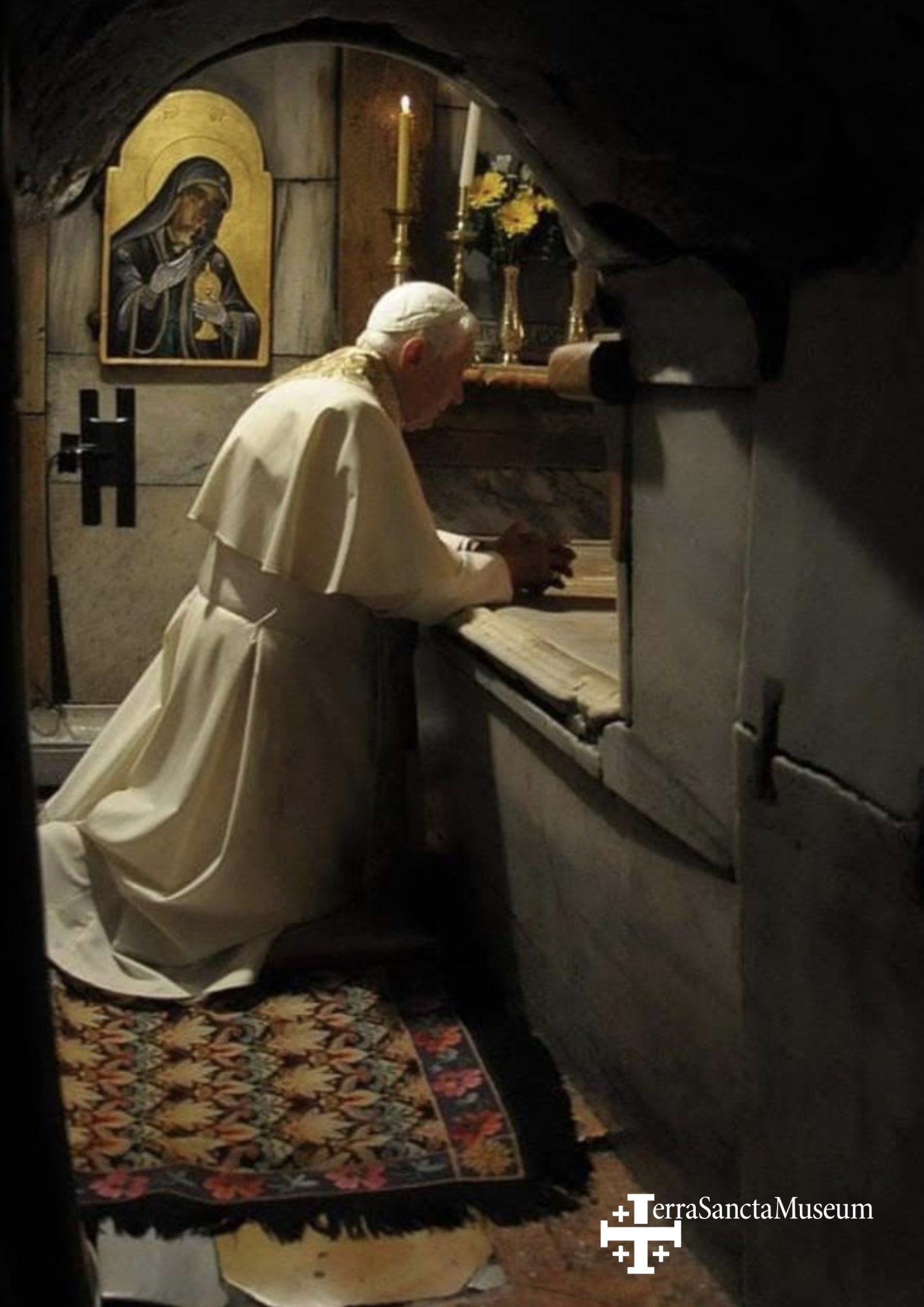Benedict XVI, art and liturgy at the service of the faith
Ordained a priest in 1951, Father Joseph Ratzinger was only thirty-five and already had a brilliant reputation as a theologian when he was asked to take part in the Second Vatican Council (1962-1965) as a consultant. He was active in favour of two reforms: that of the Holy Office, which was to become the Congregation for the Doctrine of the Faith, and of the liturgy. We will have a chance to return to the centrality of the liturgy in his thought. Subsequently appointed Archbishop of Munich by Pope Paul VI and then Cardinal in 1977, he was called to the throne of St Peter in 2005, becoming the 265th Pope of the Catholic Church.

Culture as fundamental to every man
“If you went to see John Paul II, you come to listen to Benedict XVI,” Jacques Charles-Gaffiot, art historian and expert in liturgy, member of the Scientific Committee of the Terra Sancta Museum and author of Trésors du Saint Sépulcre – Pour la plus grande gloire de Dieu, published by editions du Cerf in 2020, confides in us. An eminent professor of theology, Benedict XVI is a pope who is thought of as an intellectual authority for the 21st century. Jacques Charles-Gaffiot remembers the brightness in his eyes and his infinite humility.
On his many journeys and in his speeches, Benedict XVI appears as a defender of “a genuine dialogue of cultures and religions” (speech at the University of Ratisbon, September 2006). For him, as for John Paul II, culture remains the expression of what is most fundamental in every man and in every human society, the place where the essential of the human is played out in its dual dimension of universality and particularity. For the theologian, culture, as it is conceived by Christian thought, is none other than an attitude of “research”, supposing “willingness to listen” (speech to the world of culture, Paris, September 2008). It is by no means an invitation to fall back on to nationalist ideas of identity and is in a permanent stage of “development” if we know its origins and its history. We can recall that “Benedict XVI’s motto was none other than : Quærere Deum, “Seek God,” Jacques Charles-Gaffiot underlines once again. What a fine encouragement for the humble cultural actor that our museum intends to become in the Holy Land! Our only ambition is effectively to create a unique place which allows inhabitants, tourists and pilgrims from all over the world, to discover and understand the Cristian history and culture of Jerusalem, and to make it continue.
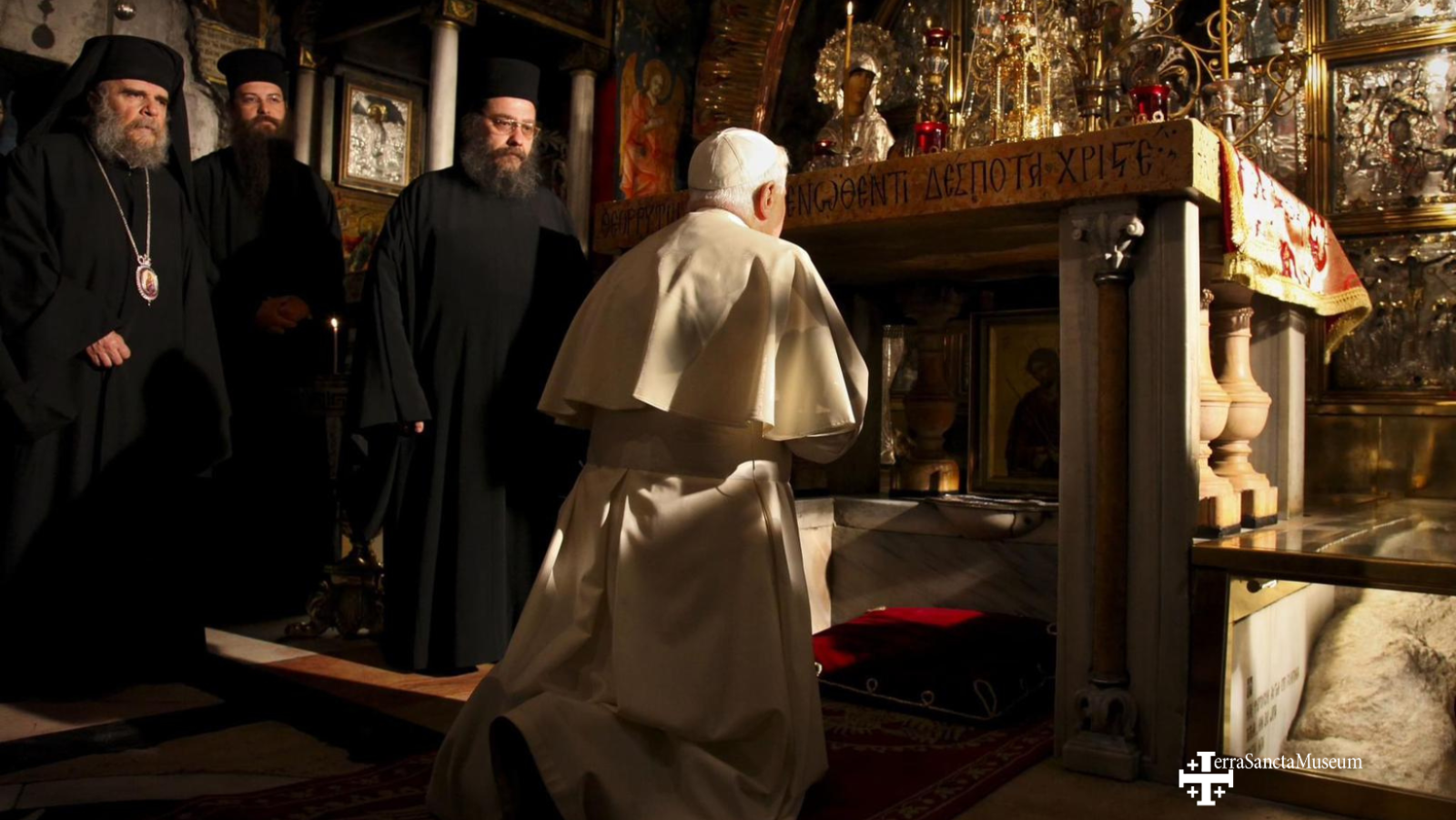
The presents of Benedict XVI
The “Holy Land” in its widest geographical definition, welcomed the theologian Pope on several occasions. First of all in May 2009, for a trip to Jordan then Israel and Palestine. The Holy Father then went to Cyprus in June 2010, then to Lebanon in September 2012. About thirty works in the collections of the Terra Sancta Museum are directly linked to his trips to the Holy Land. They are mainly commemorative gold and silver medals minted for the occasion or six candelabras made from mother-of-pearl and abalone by the Salesian Artistic Centre of Bethlehem. The popes have often offered liturgical ornaments which they brought to the communities that welcomed them. In the tradition of his predecessors, Benedict XVI gave three sets of identical golden paraments including a chasuble, four dalmatics, four stoles and chalice veil. He then subsequently wore them in Gethsemane, Bethlehem and Nazareth. Jacques Charles-Gaffiot recalls that Benedict XVI was concerned about the dignity of the liturgy, restoring meaning to these vestments for the celebrations. As for the vestments offered to Cyprus, the first, red embroidered in gold, was used for the feast-day of the Holy Cross, celebrated in the Franciscan church of Nicosia. The second was worn at the mass of Corpus Christi celebrated in the Eleftheria Sports Arena in Nicosia. Benedict XVI also left there a silver chalice, decorated with floral patterns and bunches of grapes, made in Como (Italy). Two other similar chalices were offered to the Franciscan parish churches of Bethlehem and Jerusalem.
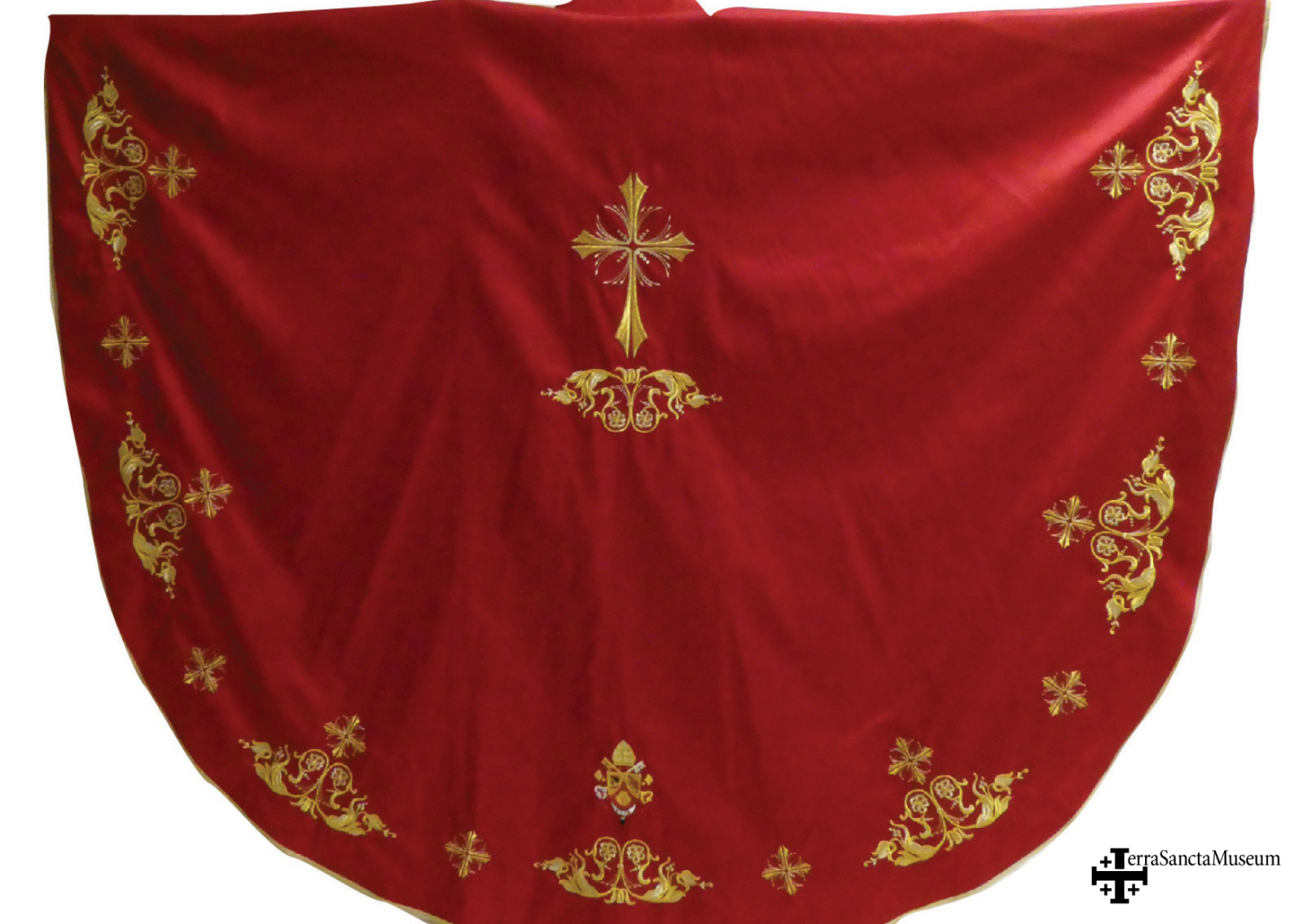
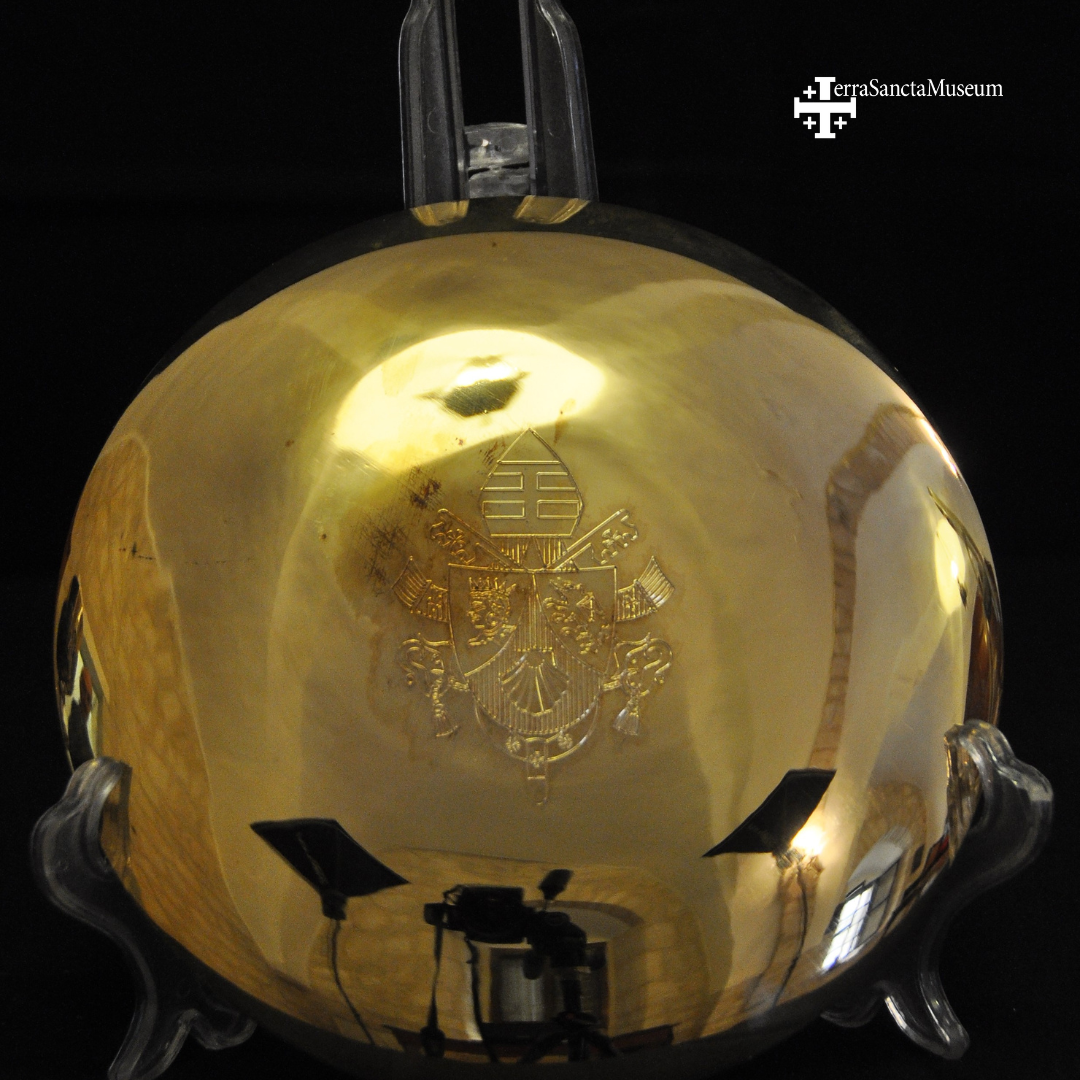
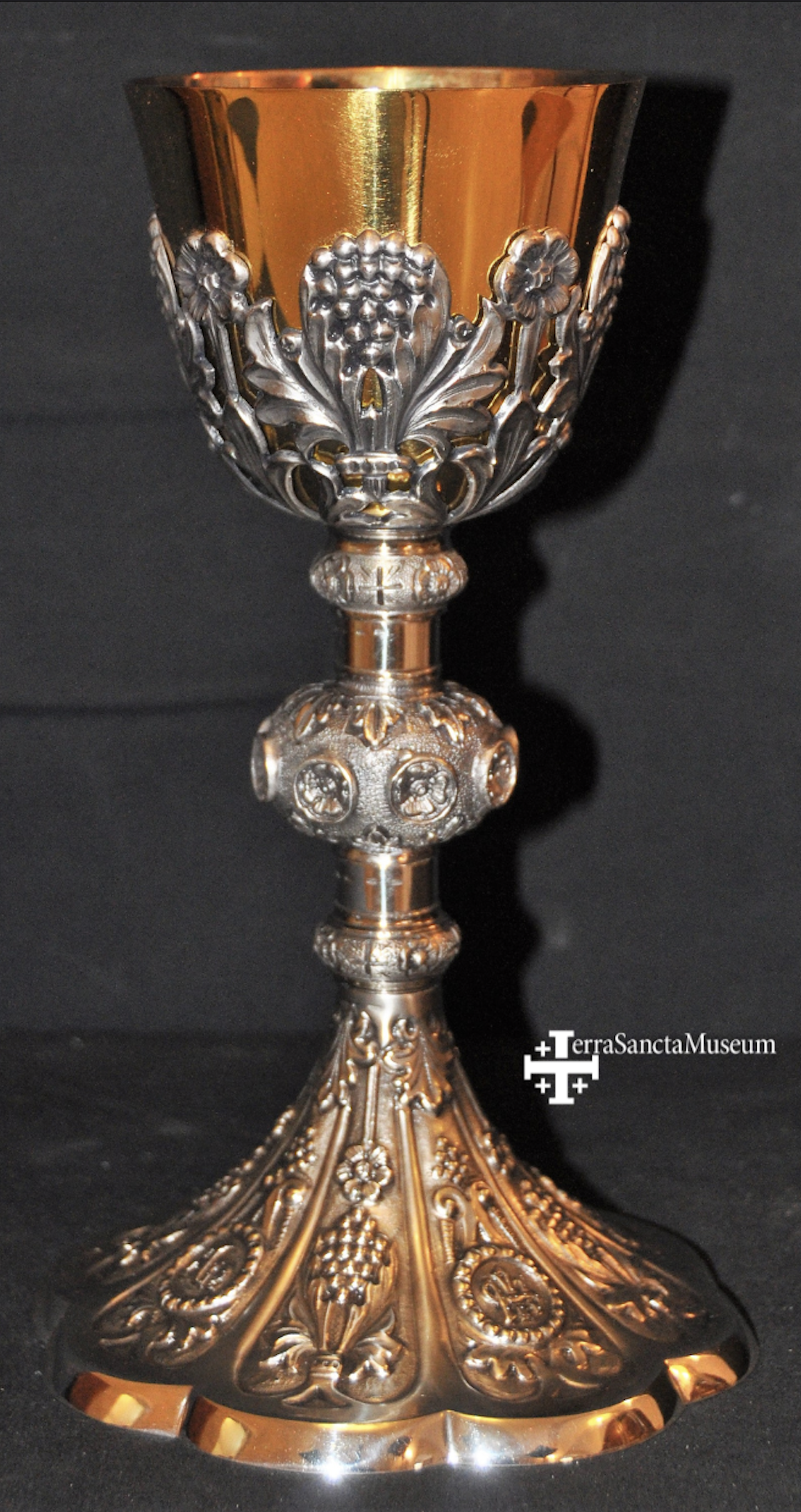
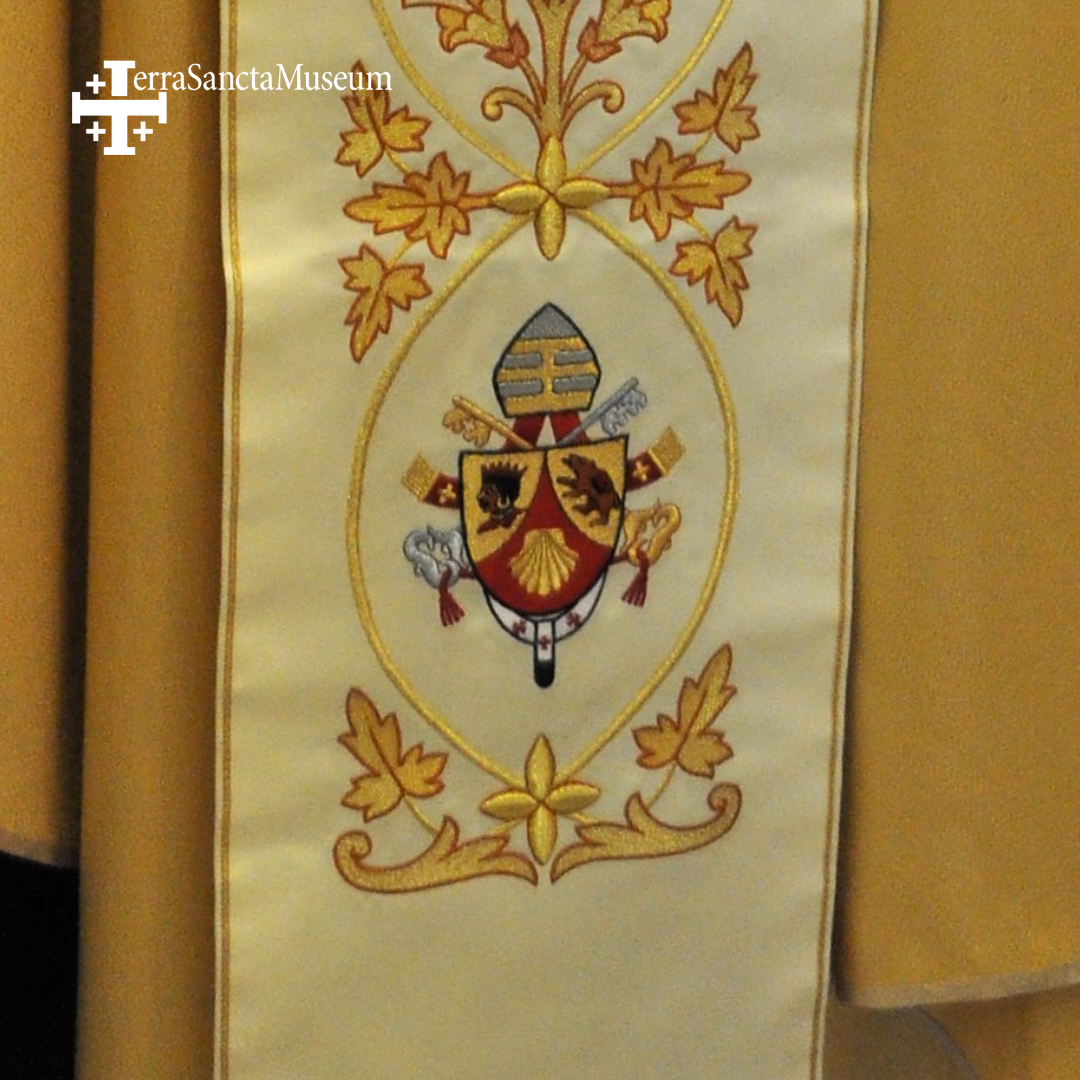
Works which are evidence of a filiation
The reserves of the Terra Sancta Museum however, also reveal other surprises such as these pontifical sandals of Pope Paul VI worn when he came to the Holy Land in 1964. Following him, the popes came in pilgrimage to the Holy Land to follow in the footsteps of Christ.
The oldest papal gift dates back to the 18th century and this antiquity has nothing surprising as the friars, since the 14th century – with the Gratias agimus Bull by Pope Clement VI (1342), were entrusted with the Guardianship of the Holy Places in the name of the Catholic Church. “For centuries, the Franciscans were the only representatives of European Christianity in the Middle East, the real links between two worlds. […] They became the “curators” of a heritage of faith and culture represented by the shrines of the Holy Land” (Fr. Michele Piccirillo, Papi e frati minori al servizio dei luoghi santi, Milan, 2000). Evidence of this are the Custody’s archives, which are full of letters, bulls and other documents from Rome, confirming in turn to the friars their responsibilities, their rights and their privileges such as that of “administering the sacraments to Christians living in the Near East, as well as giving accommodation to and guiding the pilgrims visiting the Holy Land” (Conversation with Geneviève Roumier – Alday, Giulia Ceccarelli).
Today, the Custos of the Holy Land, the superior of the Franciscan friars, is still directly appointed by the Holy See. And it is remembering this filial bond between the Custody of the Holy Land the Papacy that several popes will be honoured along the visitors’ route of the museum and that a showcase will be dedicated to the gifts of the Pontifical States. For example there will be the ostensory given by Pope Benedict XIII (1724-1730), a crucifix offered by Pius IX (1846-1878), the golden rose and the olive branch offered by Paul VI (1963-1978) as well as three chalices.
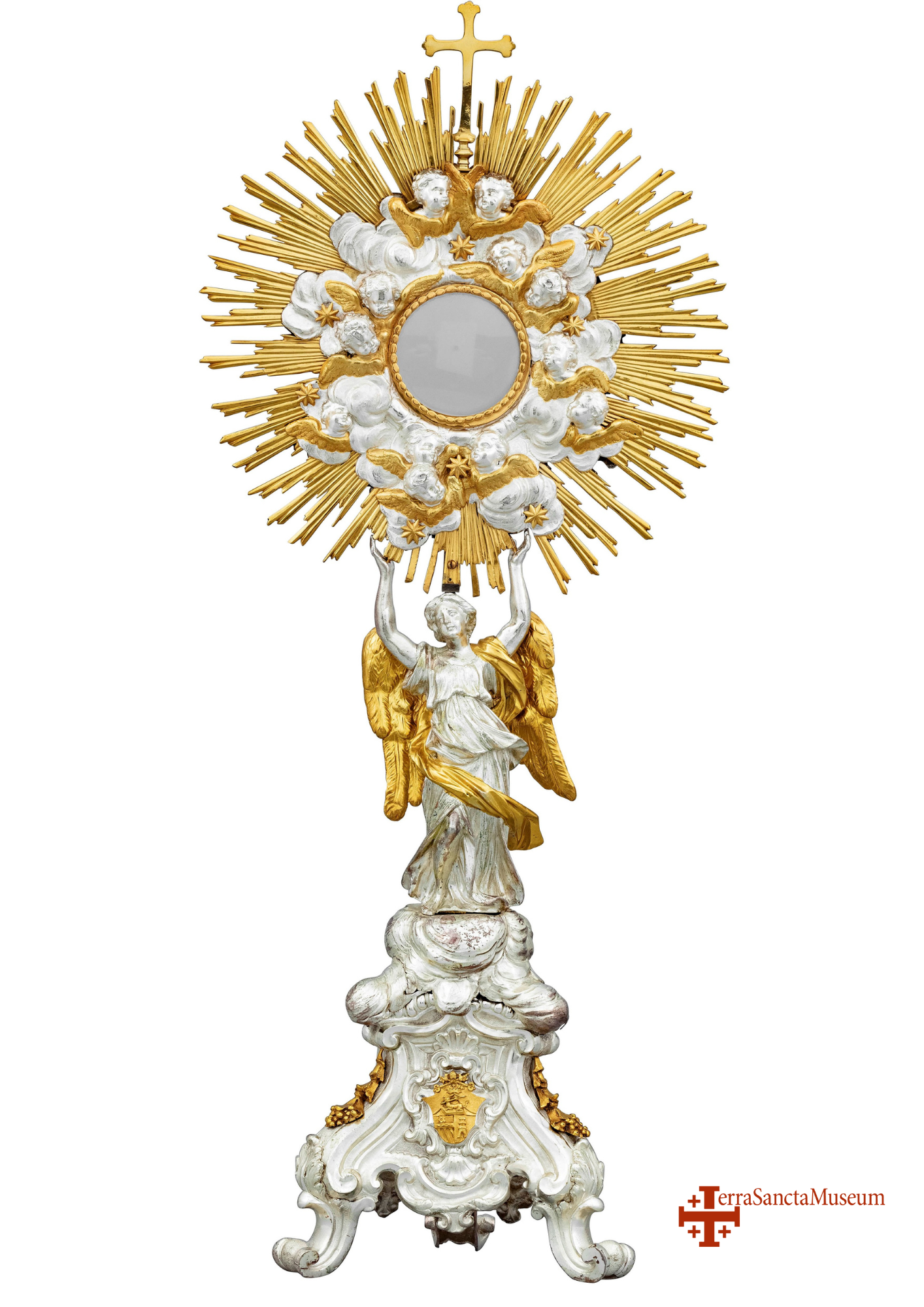
Below: Scenography project for the Pontifical Donations Room of the Terra Sancta Museum © Jerôme Dumoux – Terra Sancta Museum
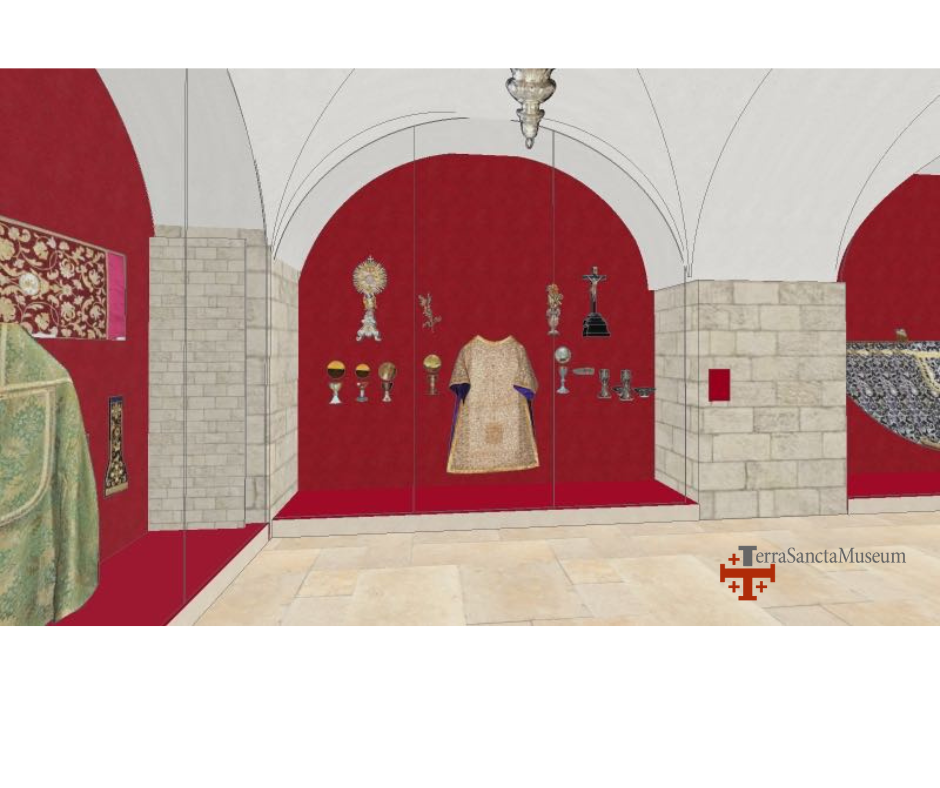
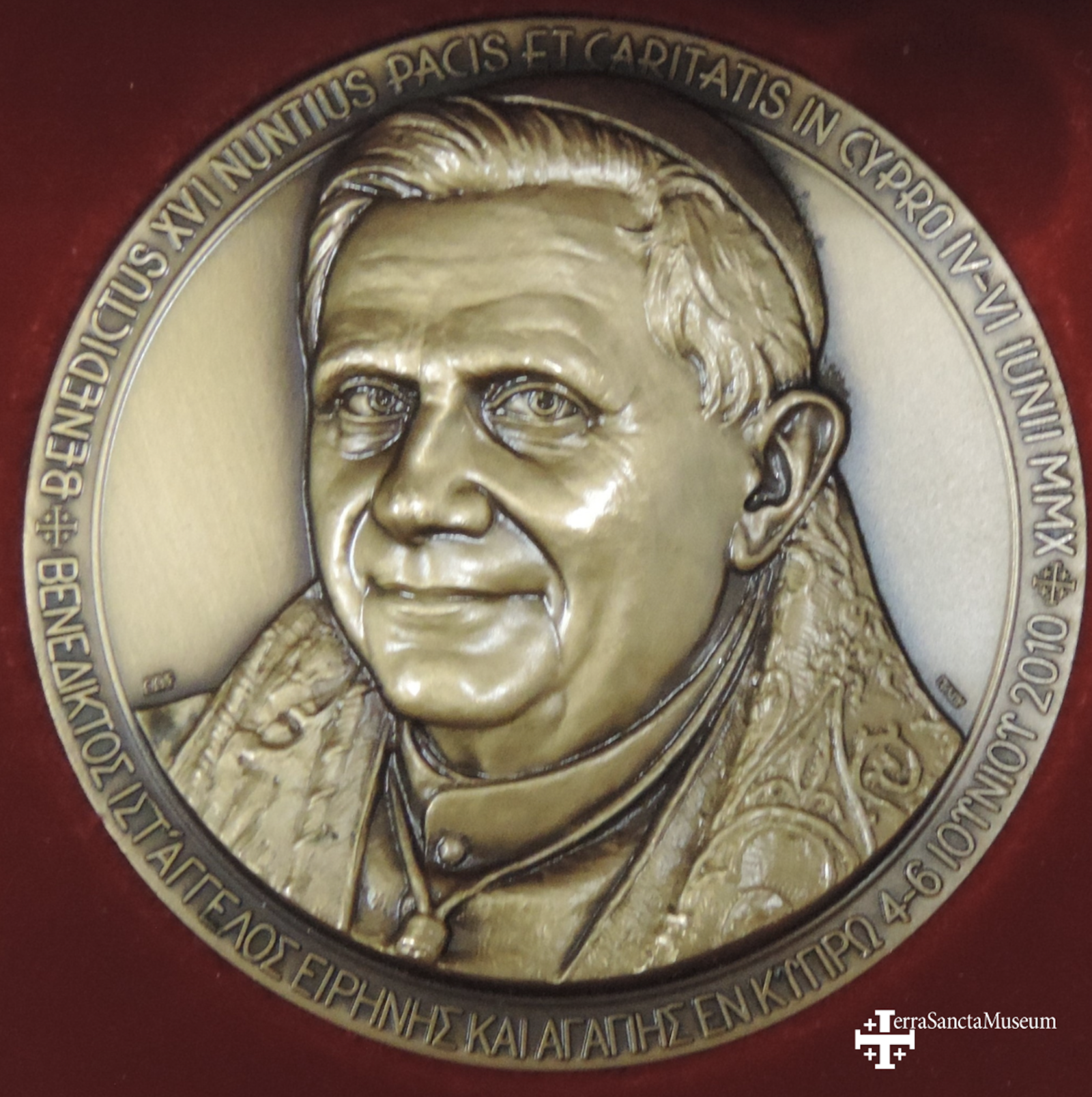
“A route of faith and artistic itinerary”
In Benedict XVI we find both the monastic desire and the taste for beauty. He was the Pope who emphasized the importance of arts and beauty at the service of the liturgy; an accent that echoes with our museum project. Throughout his life, Benedict XVI never stopped recalling the essential role of the liturgy for the life of the Church. He even devoted a book to it (The Spirit of the Liturgy, published in 2001 by Ad Solem) in which he approaches the different aspects of what he calls “liturgical Christology” and in particular art and space in the liturgy (the arrangement of the altar, the orientation of the celebration, the place of the Cross, the songs etc.). Benedict XVI was able to perceive artists not only as those who embellish existence and perfect the liturgy, but also as the witnesses and those who permanently reveal the secret desire for the infinite that everyman carries within himself. He was able to weave a particular story with the world of the arts, as shown by the speech he made in the Sistine Chapel on 21st November 2009, to several hundred artists: “Dear artists, you know well that the experience of the beautiful, of authentic beauty […]’is not something accessory or secondary in the search for meaning and happiness, because this experience does not distance us from reality…” He underlined an “affinity, a harmony between the route of the faith and an artistic itinerary, shown by an incalculable number of works of art.” He will go as far as to use the terms of the theologian Hans Urs von Balthasar (1905 – 1988) speaking of a “way of beauty” meaning that in the image of Christ there is a path which, in one way or another, goes beyond itself and shows the openness of every being, intelligence and sensitivity, body and spirit, towards the beyond without limits of love which is God Himself.
“Finding again the deep meaning of the way of beauty,” according to the invitation he addressed to a General Audience in August 2011, is quite simply to rediscover God. May the Terra Sancta Museum answer the invitation that the Holy Father Benedict XVI nurtured and be “a laboratory of faith and culture” (speech for the first European meeting f students, Rome, July 2009).
Translated from French by Joan Rundo.
